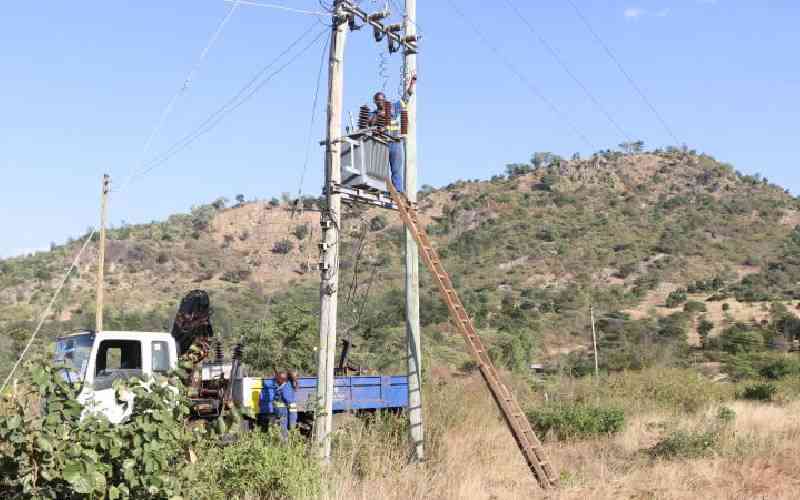
Nothing can fire up Kenya's rural economy and arid areas like provision of reliable, affordable energy.
Since it could take decades to connect these areas to the national grid, decentralised renewable technologies such as mini-grids and standalone equipment hold the answer.
Off-grid solar power, for example, can be applied to a wide range of uses, domestic and commercial. It can light and power appliances, pump drinking and irrigation water, dry agricultural produce, as well as be used in cooling and refrigeration, thereby igniting socio-economic development.
While Kenya's electricity connectivity rate has nearly doubled over the past decade to about 75 per cent, millions of households especially in rural and arid areas still lack access to electricity, as well as to safe cooking fuels and technologies. They also happen to be most exposed to the intensifying effects of climate change.
We recently launched the Power Up campaign in Kenya whose goal is to stimulate increased investment in electrifying sleepy villages alongside fragile and hard-to-reach communities and equip them in adapting to climate risks. Nine transformative actions are needed.
First, Kenya should prioritise projects and incentives driving investment in renewable energy to enhance smallholder production. Food insecurity, especially among its marginalised communities, is a perennial problem. Solar irrigation could take Kenya to food self-sufficiency. Studies indicate that solar-powered irrigation could quadruple farm output and raise farmers' income by up to six times. Solar driers alongside solar-powered cold chain could equally significantly reduce post-harvest losses. Kenya will need at least 30,000 solar technicians by 2025 to meet demand.
Secondly, the renewable energy sector needs a predictable and stable policy environment, as well as tax incentives. According to Global Off-Grid Lighting Alliance (GOGLA), following VAT exemptions in 2021 on solar and wind energy equipment, solar water pump sales surged from five percent in 2019 to 26 percent in 2022. Nevertheless, affordability remains a barrier.
There is also the need to create targeted subsidies and incentives particularly for off-grid renewable energy. Off-grid renewable energy options such as solar home systems enhance energy access in rural communities, bringing economic and social benefits. Their deployment boosts the presence of energy access providers in off-grid communities.
Increased demand for energy and an enabling environment then speeds the spread of other clean energy technologies such as water pumping and cold storage.
The fourth point is Kenya should boost demand for energy by creating consumer subsidies that help smallholder farmers to access productive use of energy technologies. Capital expenditure costs for renewable energy technologies remain relatively high. Subsidies for farmers in the value chain will help unlock large-scale demand for energy and decentralised energy systems, thus attracting more investments.
Fifth is to promote public-private partnerships into mobilising resources for productive use of energy, especially targeting smalltime producers. Tied to the above point is a need to establish a climate adaptation funding mechanism dedicated to enhancing energy access in arid and semi-arid land (ASAL) region.
ASALs constitute about 80 per cent of Kenya's land area and are home to about a fifth of the population. About eight million people in these regions face chronic food insecurity and are highly vulnerable to drought.
Electrification can address root causes such as low and falling productivity of agricultural land, reliance on rain-fed agriculture, low levels of mechanisation and high post-harvest losses.
-Mr Kioli is chairman of Sustainable Energy Access Forum Kenya (SEAF-K), Mr Mbuthi is Senior Deputy Director of Renewable Energy at Ministry of Energy.

